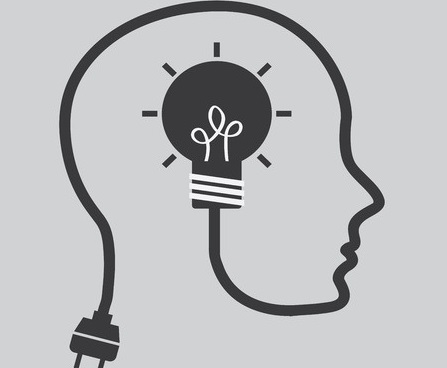
The concept of the time speaks of breaking paradigms thanks to technology
Technological disruption follows these steps mentioned above. First, creation lives in the field of remote possibilities. By gaining scale and becoming affordable, it takes over in a short time. “And we're not talking about science fiction, we're talking about real disruptions that we already experience in our daily lives,” says Edmardo.
The director explains that this process can be divided into 6 parts, according to Peter Diamandis, founder of Singularity University, a university in Silicon Valley, financed by Google, Cisco, 3D Systems and several other giants in the field. "Diamandis explains to us that disruption is part of an even larger chain of events, which he calls "exponential thinking." This kind of thinking follows, rather than a linear evolution of 1, 2, 3, 4, 5, 6; an exponential scale: 1, 2, 4, 8, 16, 32. In this way, growth is infinitely greater and more expansive”, explains Galli.
For this to happen, the 6 steps are:
1) Scan
Everything that is digitized automatically enters the exponential growth process, so that information can be replicated automatically, at no cost, almost infinitely.
2) disappointment
At the beginning of its exponential growth, the evolution is almost imperceptible and can easily deceive those who look at it from the outside. Numerically, this evolution would be 0.01%, 0.02%, 0.04%, 0.08%, 0.16%. But when this phase ends, we enter the period of…
3) Disruption
That's when the world changes and becomes exciting! It's a quick game changer where everything that was deceptive has a boom in growth.
4) Dematerialization
The next step is to literally cut space. A few years ago, for example, we would have needed a room full of different devices to have what is now inside a smartphone – phone, GPS, radio, video camera, camera, recorder, mp3 player, VHS player, etc.
5) Demonetization
Services, products and even intangibles become demonetized by new technologies. If Amazon demonetizes bookstores and Netflix demonetizes rental stores and even movie theaters, Skype demonetizes not only phone companies, but distance itself.
6) Democratization
With something digitized, which doesn't take up space and solves situations and complications that used to demand time and money, access to it becomes much more… democratic. “We live in a hyper-connected world where any information is instantly shared. Today, anyone has the possibility of having an idea, developing that idea with minimal cost (creating an application, for example), and triggering a disruptive movement in the world in a matter of months”, says Galli. "The possibilities and opportunities have never been so democratic in human history."
As an example, Edmardo listed four cases of technological disruptions that were once a dream, but that have taken over everyone's life:
1) Smartphone
When the internet emerged 20 years ago, some already imagined that one day, it would be super fast and would be in the palm of our hands – at the touch of a finger. “Disruptors gave us the smartphone that, along with the mobile internet, changed the lives of people around the world,” says Galli. It has changed the speed with which problems are resolved on a day-to-day basis; changed the configuration of the work as a whole (it is no longer necessary to be present in the office all the time); changed the way people relate; changed the speed of access to information; changed the way the press informs its readers; changed advertising; changed the priority needs of families.
2) Instagram
While Kodak declared bankruptcy, the (newly created) Instagram was selling for billions of dollars. The digitization of images, the possibility of them being in the palm of our hands and being shared with one click, made Instagram a highly disruptive tool. "Instagram has transformed the behavior of smartphone users, making all photographers passionate about capturing every moment of their lives."
3) 3D Printer
Designers already make entire collections of clothing and accessories with the 3D printer. Great solutions such as the possibility for blind pregnant women to “feel” their fetuses during ultrasounds also happened thanks to this wonderful tool. “Soon, it will be even more accessible and responsible for replacing everything we can imagine”, says Edmardo.
4) Programmatic
The internet knows everyone very well. “She knows what I like, what you like, what I bought yesterday where I went to travel – and she knows if I went alone or with my family,” says Galli. For her, there is no secret. And the programmatic emerged as a tool to organize these thousands of information in favor of brands and advertisers, who want to find and impact their customers in an intelligent and very well “thought out” way. “The programmatic is the new stage of advertising, the future of the connection between consumers and brands. Changing the way advertising is done, changing the way content is created”, celebrates Galli.












